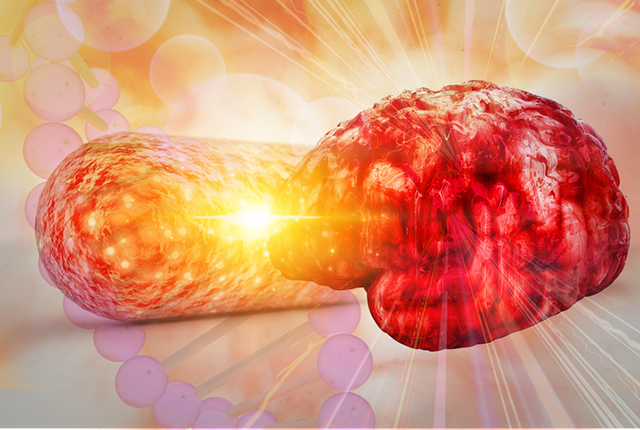
Feeling anxious? Maybe a gut check is needed.
The connection is pretty straightforward but often ignored, says a UW Medicine doctor.
How and what you eat influences how you think.
That is the case Dr. Iman Majd will try to make Thursday in the second lecture in the Cha Chi Ming Education Series. Majd directs the Osher Center for Integrative Health and is an associate professor of family medicine at the University of Washington School of Medicine.
“Gut health and brain health are intimately connected, and this is an emerging field that is just coming forward in the recent year,” Majd said. “Studies have shown that emotions, such as feelings of anxiety and depression, can be affected by the inflammation we have in the gut and related to what we eat.”
Alzheimer’s, dementia and diabetes also have been linked to the health of the gut microbiome, Majd noted. “We call dementia 'type 3' diabetes, reflecting on the inflammatory nature of this condition."
The gut microbiome is the totality of microorganisms, bacteria, viruses, fungi and their collective genetic material present in the small and large intestine. It’s estimated that approximately 100 trillion of these microbes live in the gut, where the largest collection of immune cells in the body also resides.
Doctors once thought that a preventive barrier kept the gut and the brain from influencing one another, Majd said, but recent studies have suggested otherwise.
“There are a lot of pores in this barrier and when you have something like COVID, the inflammatory chemicals can cross the barrier and cause inflammation in the brain, which can lead to anxiety, depression and even Alzheimer’s and dementia,” Majd said.
Other studies have shown that when the gut microbiome improves, so does the brain. When the digestive system is faced with an overabundance of processed foods, the integrity of the digestive system is compromised. In short, “the good bacteria disappear,” he said.
Microbiome-promoting nutrients include fibers, healthy fats, phenols and fermented foods. Fibers are in particularly high amounts in whole grains such as oatmeal as well as nuts, seeds and beans. Healthy fats include those in olives, avocados and oils high in omega-3 fatty acids.
Phenols give the colors of the rainbow to fruits and vegetables. Think blueberries, red peppers and purple cabbage. Fermented foods include brined pickles, sauerkraut, kimchi, and yogurt.
This last food, yogurt, will be a key ingredient to an online cooking class to follow Majd’s talk. Led by a UW Medicine dietitian and nutritionist, Kelly Morrow, the group will cook chana masala.
“Part of the idea of this lecture is that’s it is not hard to cook healthy meals. It’s not difficult and it will help one develop a new relationship with food,” he said. “And hopefully it will be a step to help us not to reach out for packaged or processed food for our meals and change our relationship with food”.
Register here for Majd’s talk and the cooking class, both of which are free and virtual.
This news item was written by Barbara Clements - 253-740-5043, bac60@uw.edu.
For details about UW Medicine, please visit https://uwmedicine.org/about.
Tags:braingut microbiome